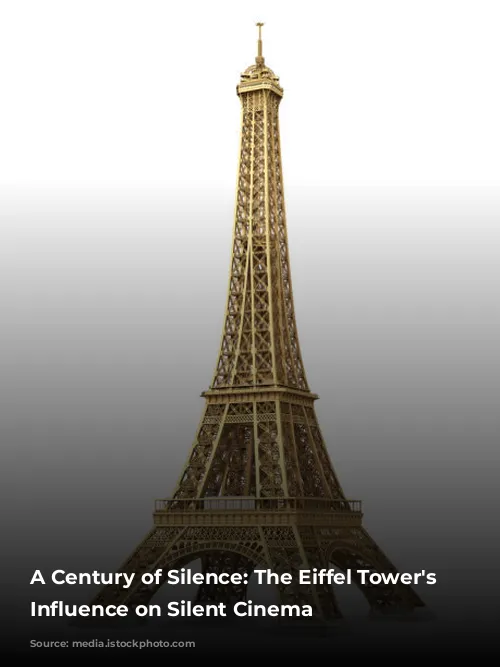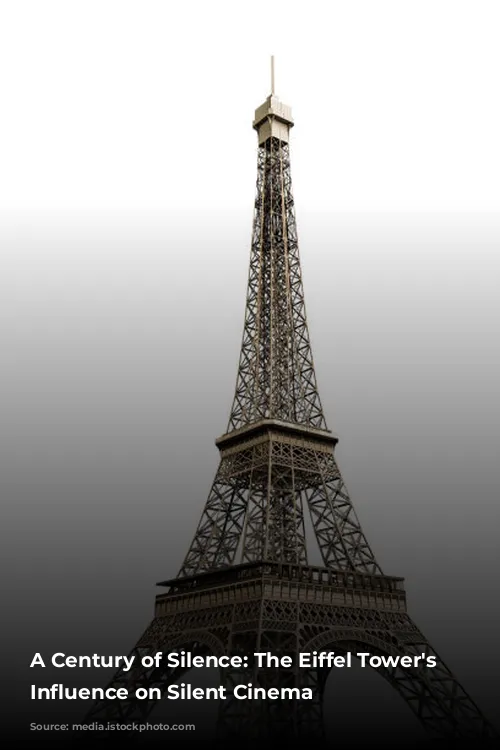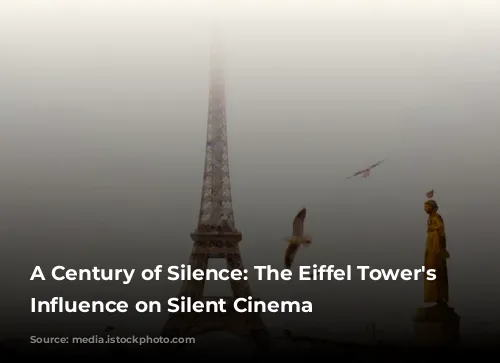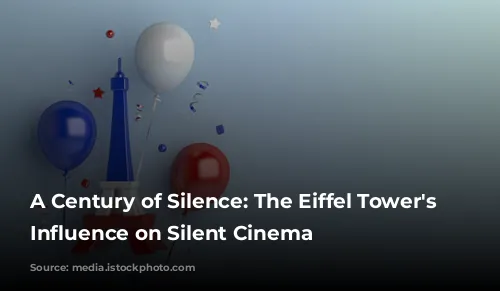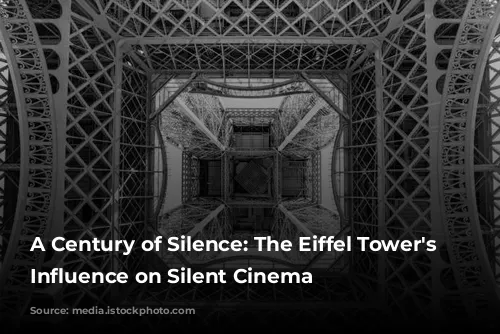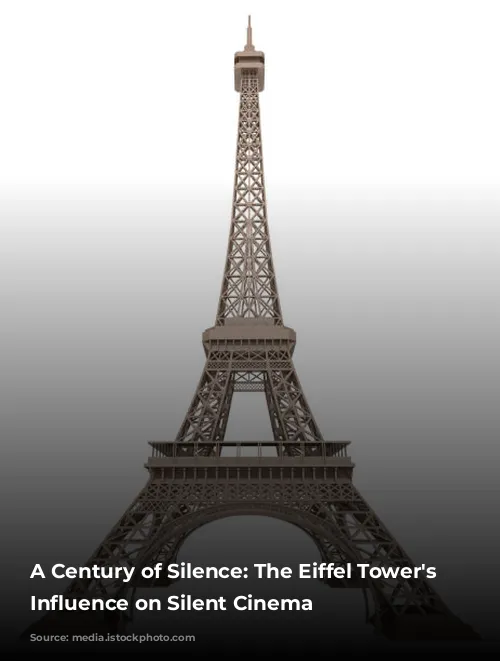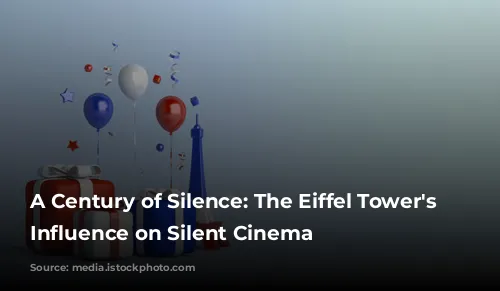The Eiffel Tower, a symbol of Parisian ingenuity, has captivated artists and audiences alike since its construction in 1889. While its presence in paintings and poetry is well documented, its role in silent cinema remains largely overlooked.
This article delves into the fascinating story of how the Eiffel Tower, a symbol of Parisian ingenuity, captivated artists and audiences alike since its construction in 1889. While its presence in paintings and poetry is well documented, its role in silent cinema remains largely overlooked. We will explore how the Tower, a true icon of the era, found its way onto the silver screen, inspiring innovative storytelling and cinematic techniques.
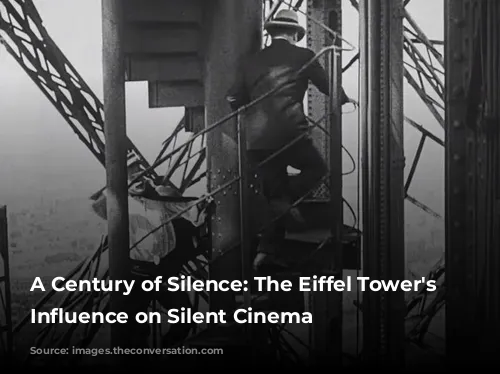
From Lumière’s Panorama to Méliès’s Fantasies
The very birth of the cinematograph in 1895 coincided with the Eiffel Tower’s presence on the Parisian landscape. The new medium was immediately drawn to this architectural marvel, as evidenced by the numerous films featuring the Tower in early cinema archives.
The Lumières brothers, pioneers of cinema, recognized the Tower’s iconic status early on. In 1897, they captured a breathtaking panorama of the Trocadero Palace with the Eiffel Tower looming in the foreground, using a cinematograph mounted in the Tower’s elevator. This groundbreaking sequence used innovative shot composition, seamlessly blending foreground and background for a truly immersive experience.
The Tower’s presence in Georges Méliès’s films is even more captivating. Known for his fantastical tales and innovative trick films, Méliès captured the Champ-de-Mars and the Eiffel Tower in several of his Parisian films between 1896 and 1900. These films showcase the Tower as a backdrop for Méliès’s magical storytelling, further highlighting the monument’s allure for filmmakers of the time.
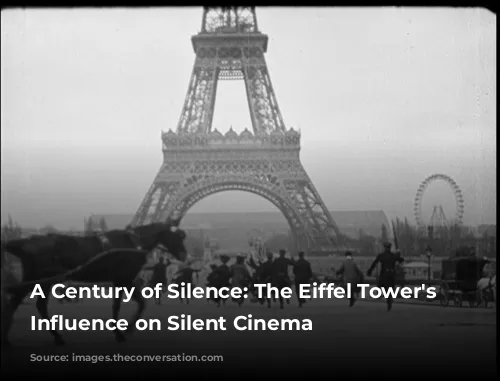
A Monument of Inspiration: From Comedy to Poetry
Beyond its presence in early documentaries and fantastical films, the Eiffel Tower inspired a wide array of silent cinema genres, from slapstick comedy to poetic expression.
The Tower’s grandeur provided a unique setting for various films. In 1906, Georges Hatot’s “La Course à la Perruque” (The Wig Chase) featured a humorous chase sequence culminating in the Eiffel Tower, demonstrating the Tower’s suitability for lighthearted entertainment.
The Tower’s allure wasn’t limited to traditional storytelling. Émile Cohl, a pioneer of animation, used the Tower’s structure as inspiration for his 1910 film “Les Beaux-Arts Mystérieux” (The Mysterious Fine Arts). This inventive animation, created frame by frame, incorporated the Tower’s form through an arrangement of matches, demonstrating the Tower’s ability to spark artistic ingenuity.
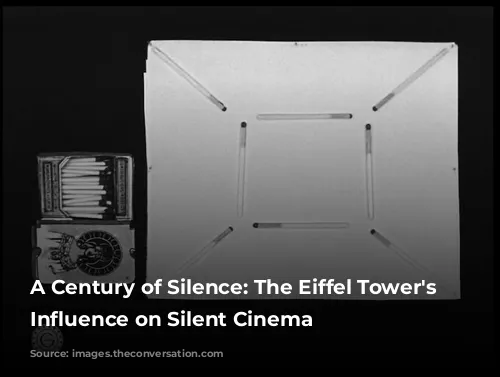
The Eiffel Tower as a Character in Silent Cinema
The Eiffel Tower transcended mere background scenery; it became a character in its own right, driving narratives and inspiring cinematic techniques.
René Clair, a filmmaker known for his avant-garde approach, used the Tower as a central element in two of his films. In “Paris qui dort” (The Crazy Ray) (1923), the Tower’s caretaker wakes up to find the city deserted. In “La Tour” (The Tower) (1928), the Tower serves as the focal point of a poetic exploration of the city. These films demonstrate the Tower’s capacity to inspire unique narratives and innovative cinematic approaches.
Jean Duvivier’s “Le Mystère de la tour Eiffel” (The Mystery of the Eiffel Tower) (1926) took this further, incorporating the Tower as a crucial plot device. The film follows a mysterious organization that uses the Eiffel Tower to send coded messages, showcasing the Tower’s potential for suspense and intrigue.
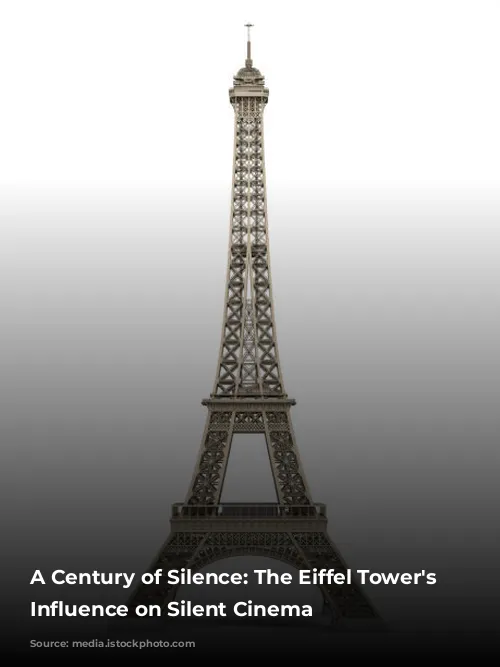
The Lasting Influence: Why the Eiffel Tower’s Role in Silent Cinema is Still Relevant
Despite the enduring presence of the Eiffel Tower in silent cinema, its influence in this specific historical context remains largely understudied. This lack of attention is partly due to the undervalued status of early cinema in academic circles.
The early years of cinema were often dismissed as a mere form of entertainment. The lack of scholarly focus on this period contributes to the neglect of the Eiffel Tower’s impact on silent films.
This article aims to shed light on this fascinating historical connection, demonstrating the Eiffel Tower’s enduring influence on silent cinema. By exploring the Tower’s presence in various genres and filmmaking techniques, we gain a deeper appreciation for the rich and often overlooked history of this iconic monument.

